Food in Quito’s Old Town is a vibrant testament to the city’s rich cultural tapestry, weaving together influences from various cultures, continents, and eras into its culinary traditions and societal norms. This blend becomes evident as you navigate through any Quiteño menu, offering a deeper appreciation for the city’s gastronomic heritage. Understanding this fusion makes dining in Old Town Quito a more immersive experience.
The roots of Quito’s traditional cuisine stretch back to before the 16th century, anchored in the Pre-Columbian diet. Staples such as potatoes, camote (sweet potato), yuca (manioc), along with lesser-known tubers like melloco, oca, and mashua, were all gifts from Pachamama (Mother Earth). From Inti, or Father Sun, came quinoa, fréjol (beans), zambo (squash), zapallo (pumpkin), hot chili peppers, and maize. While animal protein was not a significant part of their diet, the fiery hot pepper ají (hot sauce) was already a staple, adding a kick to the ancient Andean palate.
With the arrival of the Spaniards in Ecuador in 1534 came new influences: conquistadors brought their horses and their cross, as well as their own culinary traditions. Garlic, onion, oil, wheat, wine, vinegar, and new fruits arrived from over the seas, as did cows, pigs, and chicken.
The Republican Era beginning in 1822 had a refining effect on gastronomy, with more delicate cuts of meat, modern herbs, and the introduction of pastry.
Today, chefs are being more creative with foods than ever before, mixing new styles, techniques, and ingredients with traditional customs.
Discover the Culinary Treasures: Food in Quito’s Old Town
From clanging market stalls to the swishiest white tablecloth affair, you’ll find variations on the same, mouth-watering fare, that will remind you of something that you can’t quite put your finger on. But though it bears similarities to, and was probably by, other cuisines, there are some elements that make Quito dining truly unique.
As you make your way around Old Town, there are plenty of tasty options if you want to experience the typical fare of Quito. Keep in mind that you may still be acclimating to the altitude and, sometimes, this can present a little extra sensitivity when it comes to digestion. That said, here are some of our recommendations for foods that might interest you if you want to explore traditional Ecuadorian fare.
- Locro – This creamy potato soup, garnished with a chunk of avocado and a fistful of cheese, induces tears of nostalgia in any Ecuadorian who spent time in the highlands in their youth. Consider it a type of comfort food.
- Seco de pollo – Though “seco” literally translates to “dry”, the name is actually a neologism of the English word “second”, in this case, implying entrée. This moist and flavorful chicken usually comes with a heap of rice and a handful of salad.
- Fritada – What this plate lacks in healthfulness, it more than makes up for in flavor. Sweet and salty, tender and crunchy, this is a popular pork-based dish, even if it is a little greasy.
- Seco de chivo – Like its chicken cousin, this juicy goat stew is surprisingly tasty and healthier than most other options.
- Ceviche – Ecuadorians really enjoy this typical tomato- and lime-based way to enjoy fresh fish, crab, shrimp, or even hearts of palm. It often comes with sliced red onions, served along with fresh popcorn, toasted corn nuts (chulpi), and a few slices of fresh avocado. If you’re looking for a real treat, ask for a Manabí-style ceviche, which is a peanut-based variation on this ultra-popular favorite.
- Llapingachos – Golden potato patties, fried in a little pork fat, these darlings are crunchy on the outside, squishy on the inside, and tasty throughout!
- Higos con queso – Soft, syrupy, figs served with fresh farmers’ cheese; this is a popular dessert throughout this region of South America. This heavenly concoction is decadent and delicious.
- Mote – Boiled maize kernels, fried pork cracklings, and a dollop of ají (Ecuadorian hot pepper sauce) make this a local favorite. It is the go-to for many folks on a quick lunch break. This is a filling option, though it is high in fat and far from nutritious. Still, you may find out why it is so appealing.
What is the best food in Quito? Cocina Mestiza!
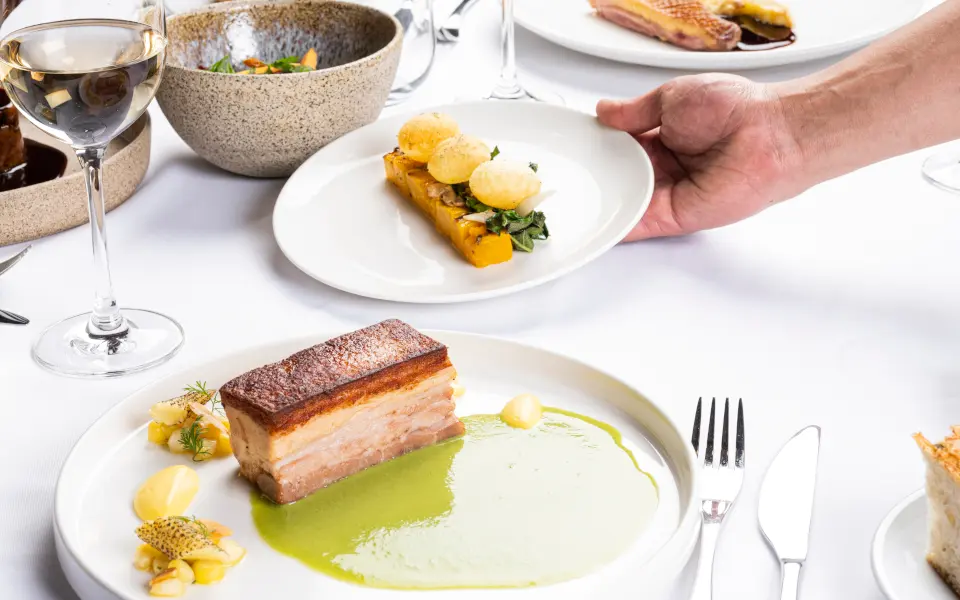
After a day or two of exploring different restaurants in the Old Town, you may find you want to avoid the typical greasy spoon-style joints that you find around every corner. Maybe you want to treat yourself to a truly unforgettable dining experience. That’s where Casa Gangotena’s Restaurant can really provide you with the most ideal culinary adventure.
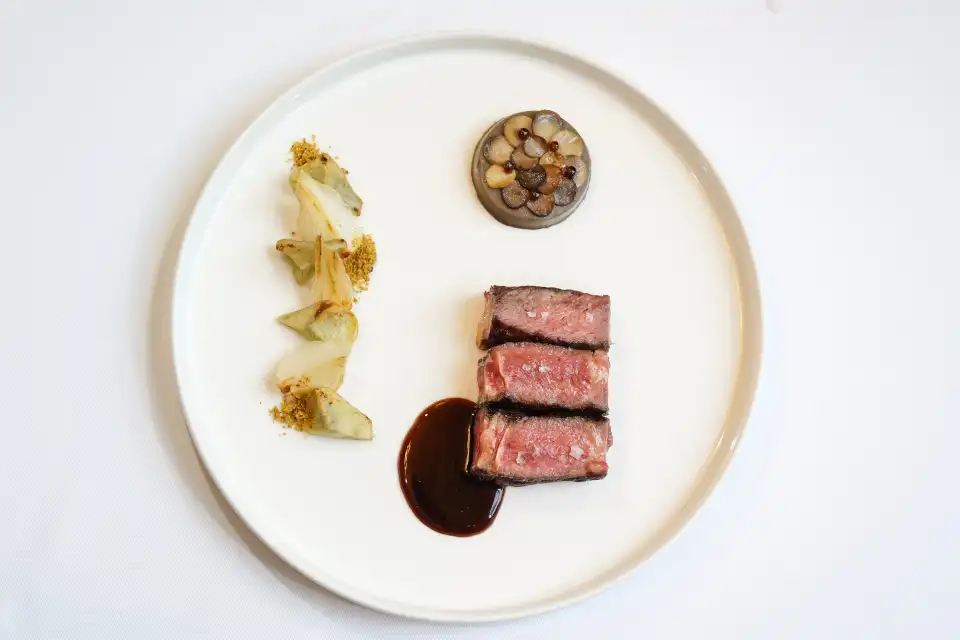
Just as Ecuador’s indigenous and Spanish cultures combined to produce something new and authentic called mestizaje, which, in turn, gave birth to a unique culinary identity, Casa Gangotena’s Restaurant celebrates this tradition by reimagining classic dishes and recipes rather than simply reproducing them.
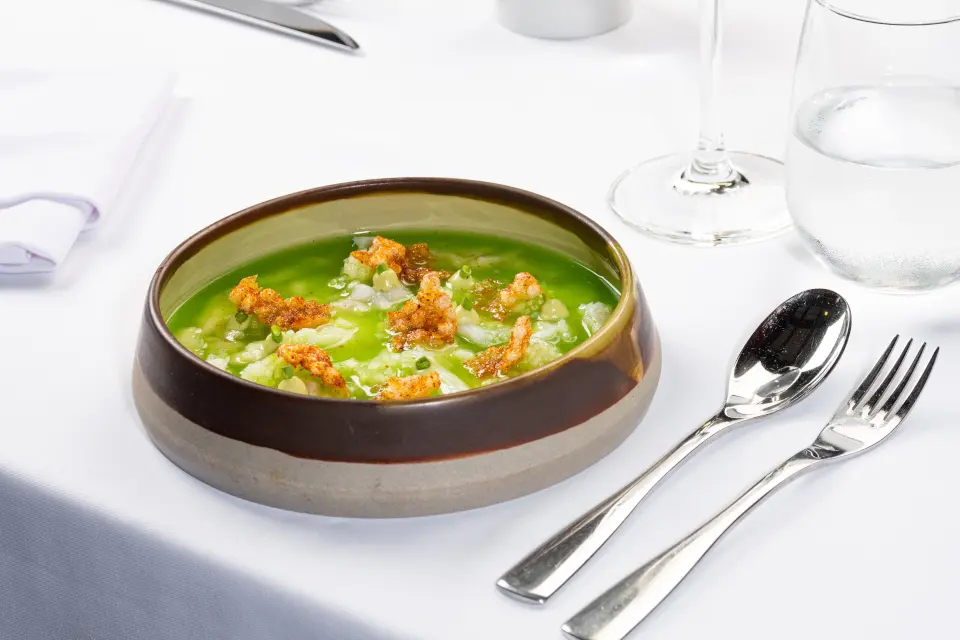
This style of food preparation is called Cocina Mestiza. It melds the best ingredients and flavors with the most creative and contemporary techniques. Residents of Ecuador will recognize familiar flavors and textures, while visitors can appreciate the distinct gastronomical heritage on display in a style unlike that of any other restaurant in Quito.
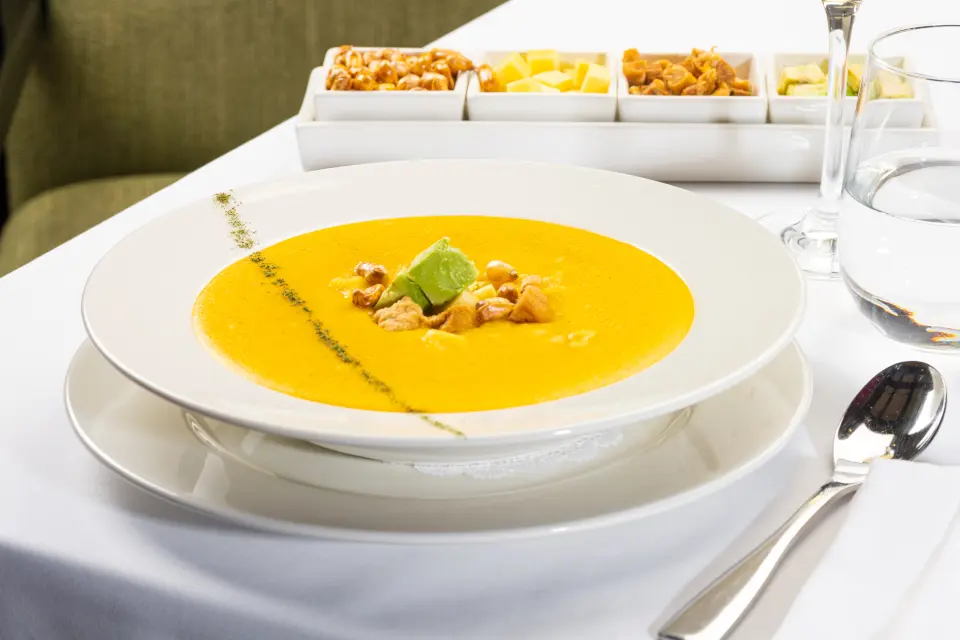
Take for instance the popular dish called Locro, while you can sample this local favorite, just about anywhere in Quito, when you order it at Casa Gangotena, you can immediately experience the difference. Part of it may be the freshness of the ingredients, but there is a certain unidentifiable difference in the preparation, presentation, flavors, and textures, that just makes this dish really stand out.
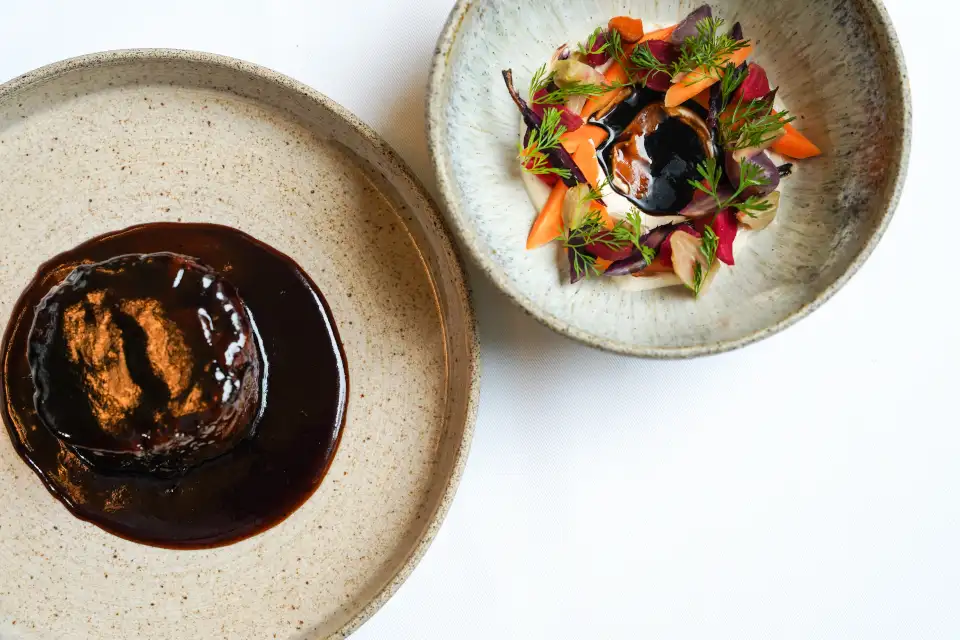
If you’re not sure what to order at Casa Gangotena, you’re in luck! The Restaurant features a beautifully curated 7-course tasting menu, available with or without a distinct wine pairing!



